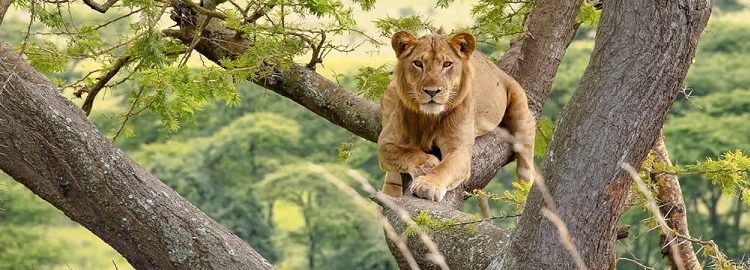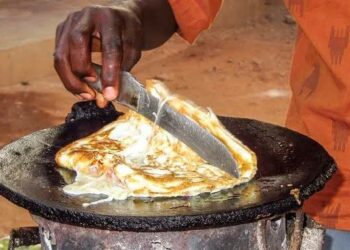Jeju is the largest island in South Korea and one of the most visited tourist locations in the country.
Thanks to its unique climate, the island has developed an ecosystem that is very different from anywhere else in South Korea. Such unusual nature is due to the fact that Jeju Island arose as a result of a powerful volcanic eruption many millions of years ago, and remnants are still seen to this day.
The island has attracted the attention of many travelers and scientists, making this place a World Heritage Site that is protected by UNESCO.
The island is famous for its breathtaking and diverse nature, and travelers will find everything from azure beaches to waterfalls, pieces of extinct volcanoes, and even huge craters.
In addition to the flora and fauna, Jeju Island is an excellent place to get to know the interesting local culture and lifestyle. In fact, we’re sure you’ll be jumping at the chance to apply for a South Korean visa after reading about all of the amazing things to see and do in Jeju.
Hallasan National Park
The main attraction of the island is definitely its picturesque landscapes. Most tourists begin their journey around Jeju Island with a visit to Hallasan National Park.
Hallasan, which is also the name of the extinct volcano that is located on the island, is considered to be the highest point in South Korea. Its height is 1950 meters, and the mountain is visible from nearly any part of the island.
Hallasan National Park and its surroundings are extraordinarily beautiful and are home to more than 4,000 species of different animals and countless different plants. Such an incredible diversity of nature and beauty of this place has earned this place the title of UNESCO’s Biosphere Reserve in 2002.
The best time to visit the park for tourism is in the spring, as hundreds of plants and flower fields are in bloom and create amazing landscapes.. Likewise, spring has the most pleasant weather out of all the seasons, and it is an excellent time to climb the 10-kilometer route up to the top of Hallasan.
Haenyeo Divers
One of the most extraordinary cultural attractions of Jeju Island is the divers, which are officially known as ‘haenyeo.’
Haenyeo diving is a profession unique to this island and is performed exclusively by women. Haenyeo dive to a depth of three to five meters without using any equipment to catch octopus, mussels, seaweed, and other marine creatures that live at the bottom.
Since the younger generation typically migrates to the mainland in search of better opportunities, the art of haenyeo diving is mostly done by older women — some in their 80s.
The South Korean government is trying to preserve and save such a tradition, which is why they recently opened a special school where people can learn the profession for free. In fact, even foreigners and men are allowed to come and study this ancient craft.
Sangumburi Crater
Sangumburi is one of the most interesting attractions in South Korea. While it may look like a regular landscape at first, there are more than 430 plant species that grow inside a crater with a circumference of only 2 kilometers.
Even more surprising, these plants belong to three different biological zones — subtropical, temperate, and alpine — making them a real biological miracle.
Along the crater, there is a walking path surrounded by green vegetation, and in autumn, rosa multiflora (roses unique to Asia). Visitors can also walk around the crater along specially designated paths that offer the most beautiful views inside.
Dol hareubang
Dol hareubang are stone statues that can be found all over Jeju Island and are an official symbol of the area.
These ‘grandfathers’ were considered the protectors of the local population in ancient times, as they guarded the island against pirates and other invaders. In fact, the statues were an illusion: the pirates who were sailing around Jeju would look into their telescopes and think that the Dol hareubang were actual men on the island.
Nowadays, these charismatic locals decorate the entire island, and there is even a tradition among tourists to rub the nose of the statue in order to fulfill their wishes. Travelers can find both ancient statues that are more than one hundred years old, as well as newer ones that have been installed to maintain the local atmosphere. Don’t forget to take a photo with your new local ‘friend’.
Jeongbang Waterfall
The Jeongbang Waterfall is the only waterfall in Asia that pours directly into the ocean. Despite the fact that Jonbang flows into the ocean, it does not dry out — even in the summer! Likewise, in winter and during heavy rains, this waterfall shows the real power of nature.
The waterfall is located in an incredibly picturesque area, surrounded by trees that bend their branches along the falling water, as if they, too, are also flowing into the ocean. Near the waterfall, there is an observation platform from which visitors can admire the views of the turbulent water falling into the endless ocean, and it is especially beautiful during sunset.
Jeju Folk Village
Jeju Folk Village is an excellent place for those who want to learn more about the history, customs, and life of the people who used to live on the island. In the village, travelers can find traditional huts, temples, schools, ancient cobbled streets, and government buildings.
For those who want to delve even deeper into the local culture and customs, there is an opportunity to see the ancient traditions, participate in national games that are passed down from generation to generation, and taste the incredible local cuisine that has already won the hearts of many foodies all over the world.
Do you have a story in your community or an opinion to share with us: Email us at editorial@watchdoguganda.com














